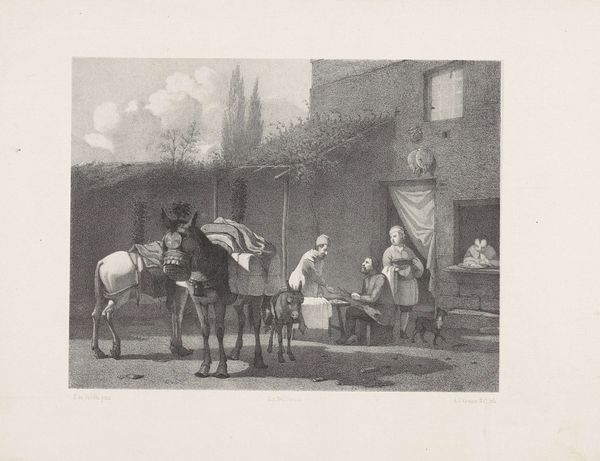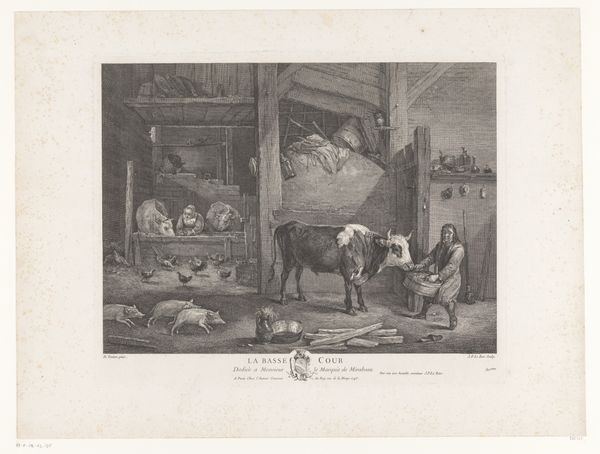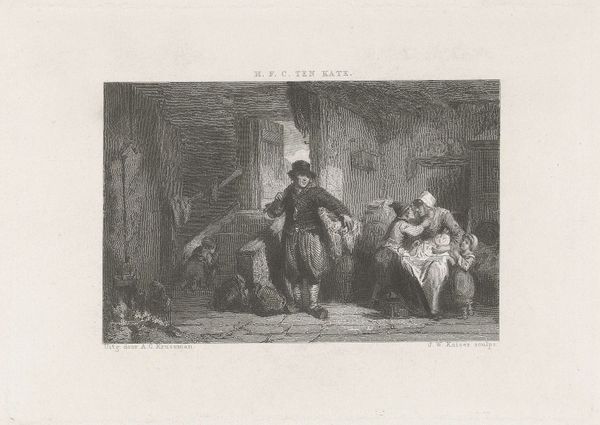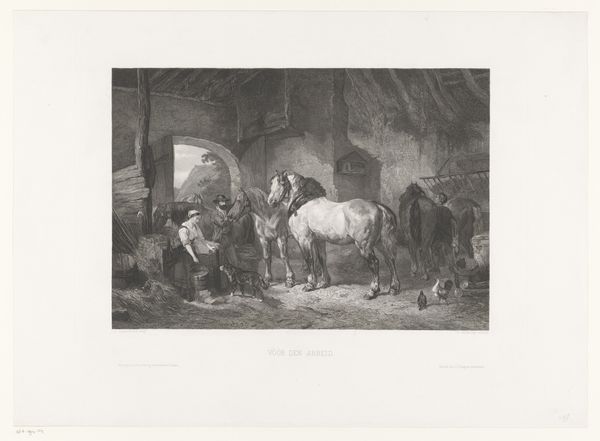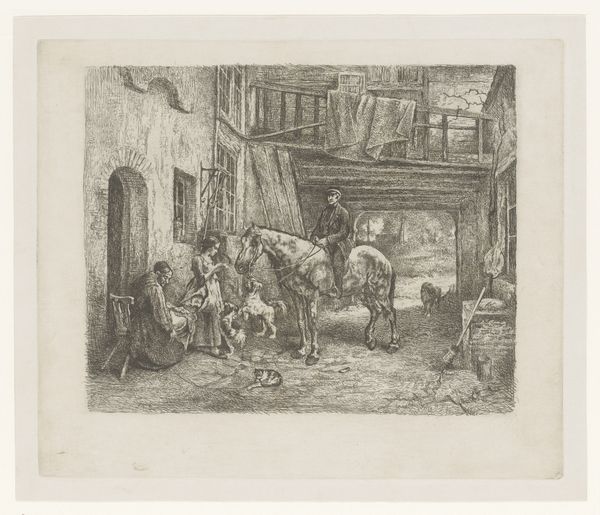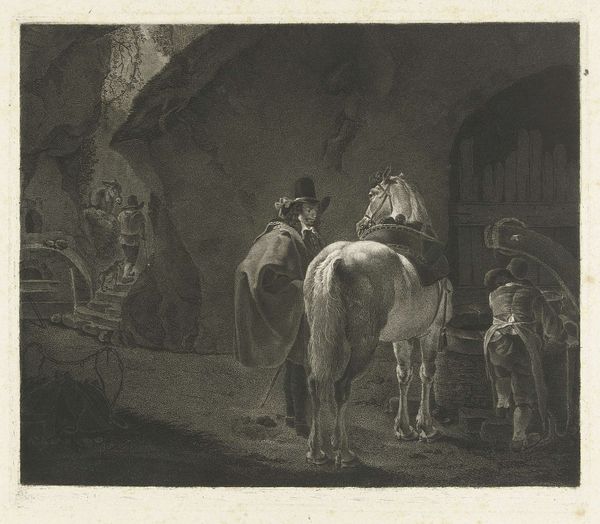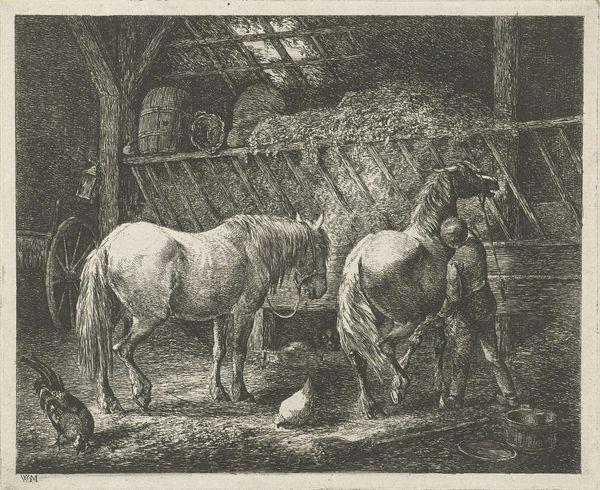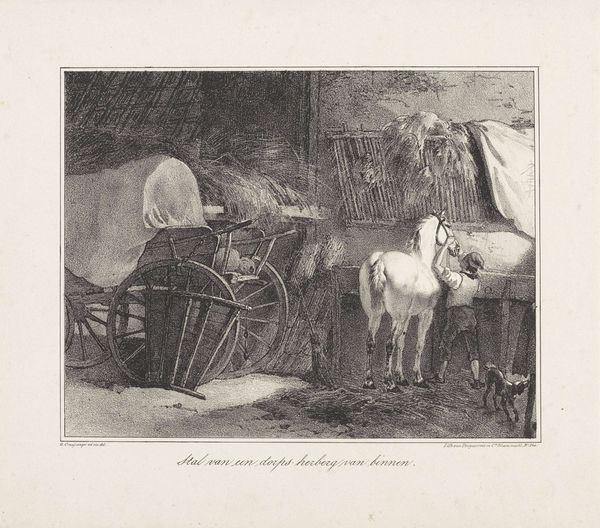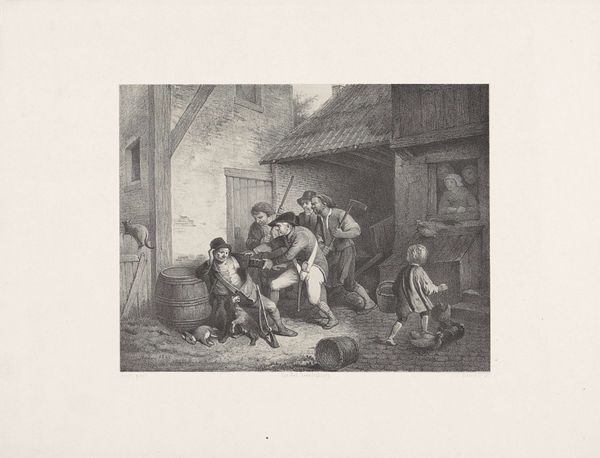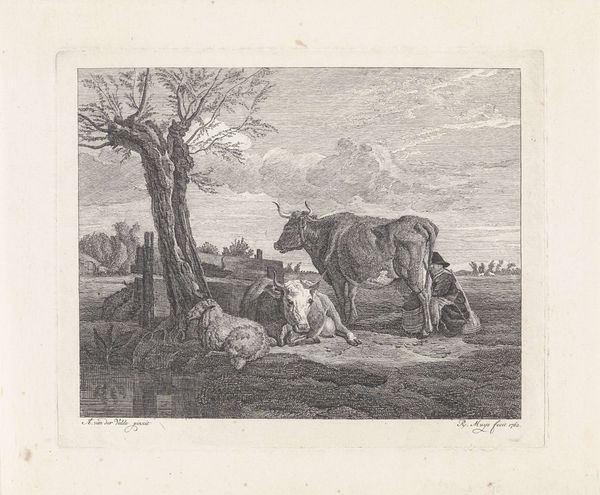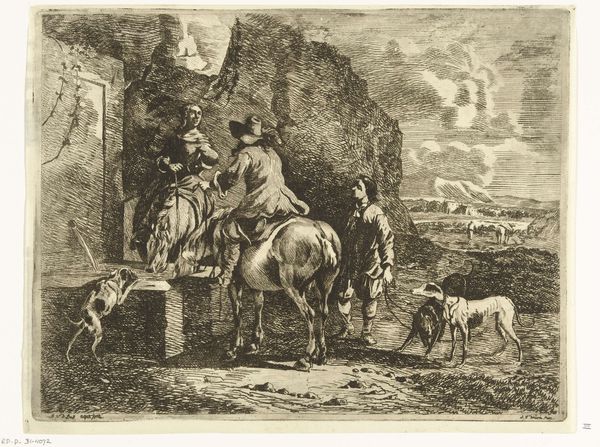
drawing, paper, ink
#
drawing
#
landscape
#
paper
#
ink
#
horse
#
genre-painting
#
academic-art
#
realism
Dimensions: height 111 mm, width 180 mm
Copyright: Rijks Museum: Open Domain
Editor: So this drawing, "Man te paard in een stal," which translates to "Man on horseback in a stable," is by Willem Steelink, made sometime between 1836 and 1913, using ink on paper. It feels like a pretty standard realist scene, but the texture created by the ink is quite interesting. What strikes you when you look at it? Curator: Immediately, I’m drawn to the composition and the strategic use of light and shadow. Notice how Steelink utilizes the stark contrast to delineate form and create depth. The horse, prominently positioned in the foreground, commands attention due to its lighter tone against the darker interior of the stable. Editor: Right, the lighting definitely emphasizes the horse. The animal is the clear focal point in the drawing. Curator: Precisely. Consider how the linear quality of the ink strokes contributes to a sense of realism, but also imposes a certain flatness. Are we to assume the subject here, that horse, the dogs, and so forth, are representative of a commitment to Realism, or are we meant to understand them as functions of lines? What is their interplay? Editor: I see what you mean. The forms are realistic, but they’re also defined very deliberately through line work. They are signs. Do you think that contrast is intentional? Curator: I believe so. By blending elements of academic art with realism, Steelink establishes a dialogue between established artistic conventions and a desire for objective representation. Look closely at how line is varied. The varying degrees of darkeness in each stroke imply form. But do they also delineate narrative? Where are the structural divisions within the image and where do they overlap? How does that play into the tension between realism and a certain structural formalism? Editor: That’s a really interesting way of thinking about it. I hadn't considered the balance between realistic depiction and formal elements so explicitly. Thanks for the insight! Curator: My pleasure. Considering the inherent properties and structural dynamics within an image opens up a fascinating avenue for deeper engagement.
Comments
No comments
Be the first to comment and join the conversation on the ultimate creative platform.
